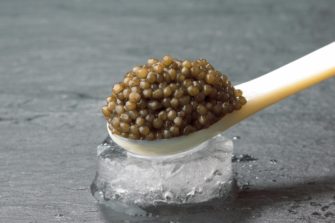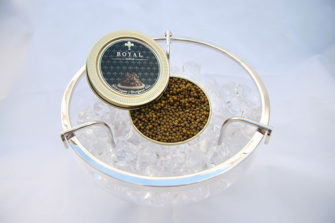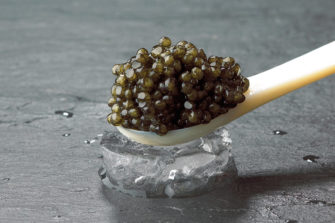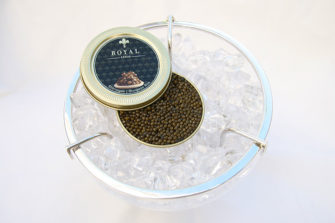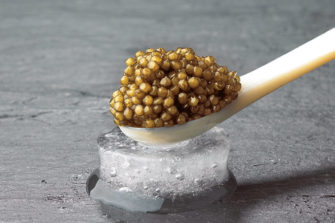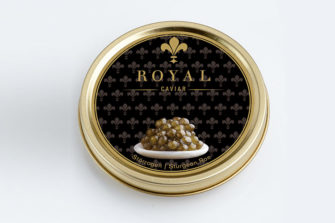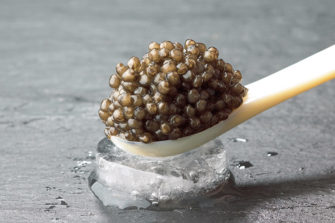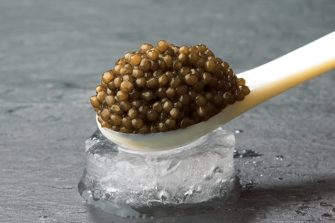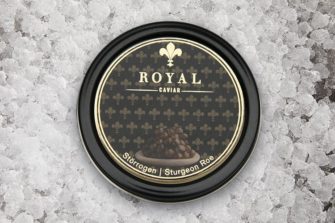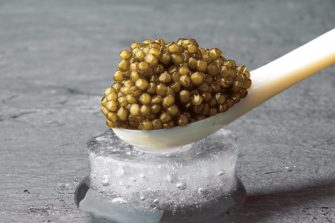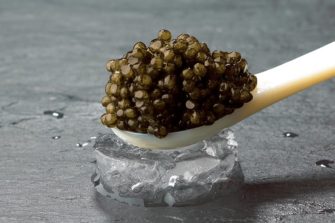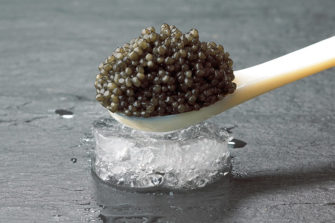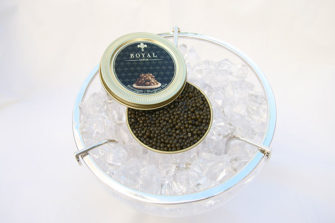Caviar fish – what fish is caviar made from?
Caviar is a distinct culinary delicacy that is part of many gourmets’ special moments of delight. In general, the term “caviar” is used to describe the eggs (roe) of fish that have been treated with salt. A distinction must be made between the fish from which caviar is obtained. In addition to classic, genuine sturgeon caviar (or real sturgeon caviar), caviar from salmon, trout or other species of fish, as well as other caviar substitutes, are also available on the market. Learn more about the different caviar fish on this page.
Buy caviar now!Which fish does real caviar come from?
According to legal regulations, e.g. the Codex Alimentarius of the Food and Agriculture Organisation, only fish eggs of the sturgeon family (Acipenseridae) may be sold under the name “real caviar”. Sturgeon caviar is valued among gourmets for its slightly salty taste with nutty nuances and its fine, creamy melting. As most sturgeon species are on the Red List of endangered species, the catching, and trade of wild specimens is banned internationally. Real caviar therefore comes from cultivated sturgeon grown in aquaculture or ponds. Animals of the genera Acipenser and Huso are particularly important for caviar production:
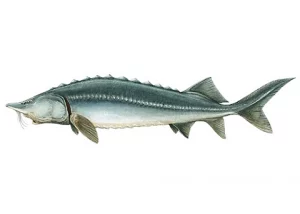
-
European House Sturgeon
(Huso Huso), also called Beluga sturgeon or Great Sturgeon, is the world’s largest sturgeon variety. The 2 to 4 meter large fish can weigh up to 250 kg and are originally native to the Black Sea, the Sea of Azov and the Caspian Sea as well as their tributaries such as the Danube, the Ural, or the Volga. The name “Beluga” comes from the Russian word “белый” for white and describes the pale side and belly region of this sturgeon species. Beluga caviar is considered particularly noble and is a highly sought-after caviar. Discover Royal Beluga caviar in our online shop.
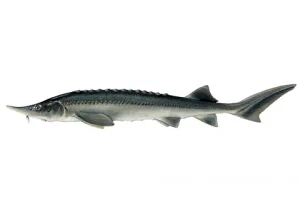
-
Siberian Sturgeon
Siberian Sturgeon, (Acipenser baerii), reaches a size of up to 80 to 140 cm and occurs naturally in the rivers flowing into the Arctic Ocean in Russia, Kazakhstan, and Mongolia. Our caviar variety Royal Caviar is sourced from Siberian sturgeon.
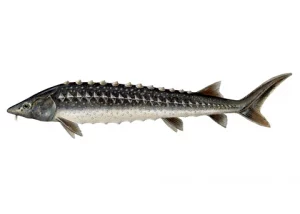
-
Russian Sturgeon
Russian Sturgeon, (Acipenser gueldenstaedtii) – also called Diamond Sturgeon, Danube sturgeon or Osietra sturgeon, grows up to two meters long in the wild. This variety is originally native to the Black Sea, Sea of Azov and Caspian Sea as well as the adjacent rivers. In the Royal Caviar online shop, you can choose between the Imperial Caviar as well as Imperial Gold Caviar and Osietra Caviar varieties, all of which come from the A. gueldenstaedtii sturgeon.
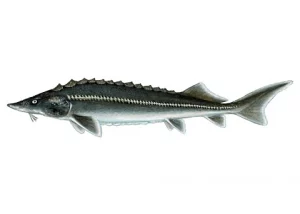
-
Hybrid Sturgeon
In addition, caviar is also produced from crosses of different sturgeon species, so-called Sturgeon Hybrids. Of particular economic importance are hybrids of Amur sturgeon (Acipenser schrenckii), a sturgeon species that is 1 to 1.5 meters long and originally found in the Amur and its tributaries, as well as in the Sea of Japan, and Kaluga sturgeon (Huso Dauricus), a sturgeon species also known as Kaluga sturgeon or River Beluga, which is up to 4.5 meters long and also originates from the Amur. In our online shop, you will find three varieties of caviar sourced from these hybrid sturgeons:
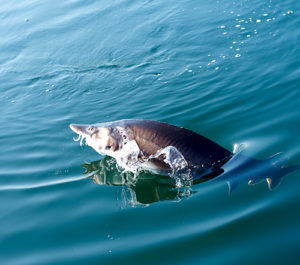
To a much lesser extent, the following species of sturgeon are also relevant for caviar production:
- Persian Sturgeon (Acipenser persicus),
- White Sturgeon (Acipenser transmontanus)
- Chinese Sturgeon (Acipenser sinensis),
- Sterlet (Acipenser ruthenus)
- Adriatic Sturgeon (A. naccarii)
- Starry Sturgeon (Acipenser stellatus), also known as “Stellate Sturgeon” or “Sveruga”
- European Sea Sturgeon (Acipenser sturio), also known as “Common Sturgeon”
- Atlantic Sturgeon (Acipenser oxyrinchus)
Normally, sturgeons are brown to grey to black in colour, but occasionally albinism occurs. Albino sturgeon were rarely caught in the past, so albino caviar was a particularly scarce delicacy. As so-called Shah caviar, albino sturgeon caviar was reserved for the high nobility for a long time. In the meantime, albino sturgeon can be selectively bred. For this reason, we are able to offer Royal Premium Gold Caviar, our high-quality Shah Caviar.
Order real sturgeon Caviar now!
Caviar from fish that do not belong to the sturgeon family
As a low-cost alternative to real caviar, eggs from other fish are also offered in the trade. If the roe does not come from specimens of the sturgeon family, the caviar fish must be declared as an additional designation on the product. For example, so-called “German caviar” is a popular product. It is the roe of the lumpfish that is salted and tinted black to look as similar as possible to the original. The red eggs of the dog salmon are marketed under the name Keta Salmon Caviar (or “Keta Caviar” for short). Most of this salmon caviar comes from Canada and is notable not only for its intense orange colour but also for the large diameter of the grains (up to 5 mm). Trout caviar is also widely available. The grains of this caviar are golden to orange colour and relatively small. The processed roe of a number of other freshwater and saltwater fish are also marketed as caviar substitutes. These usually contain the fish species as an addition in the name (e.g. whitefish caviar, pike caviar, herring caviar, etc.).
Royal Caviar is committed to providing high quality products. For this reason, we have made the conscious decision not to sell caviar substitutes and only offer genuine caviar from sturgeon in our online shop.
discover our caviar offersVegetarian caviar surrogates made from seaweed
Modern food technology has succeeded in developing vegetarian or even vegan caviar alternatives. These commercially available products are for instance made from algae or seaweed and look confusingly similar to “real caviar”. These black balls also have a marine flavour due to the ingredients that come from the sea. However, such caviar substitutes typically have a long list of ingredients. This is not surprising. After all, the consistency and flavour spectrum of natural caviar must be imitated with a variety of artificial aromas, colouring agents, flavour enhancers and preservatives.

 DE
DE RU
RU